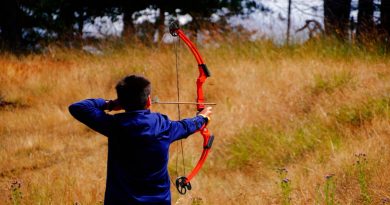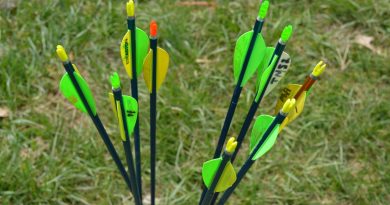History of Bows
The bow is considered to be one of the first inventions by humans and it is equated with the invention of the wheel and fire in importance in the life of primeval people. Literatures, mythologies, art, and warfare of ancient cultures invariably included the bow and the arrow as an indispensable part of the lives of people in those times. The early bows were quite simple in construction. A slender stick, termed as the stave, which was capable of bending without getting broken was selected. A cord was attached to both ends of the stick with a fixed amount of tension. When the cord or the string was drawn, the stave would bend. The arrow would be placed in the center of the string, lining it with the stave. When the arrow was released from the string, the impelling force would help the arrow to be shot to various distances and hit targets.
The early bows were mainly used for hunting smaller animals and birds for food, as well as to ward off the danger from larger and ferocious animals such as lions, tigers, and bears from attacking the humans. Evidence of the use of wooden and composite bows had been obtained by historians from many parts of the world, such as Western Europe, North and South America, China, India, the islands of Pacific Ocean and Indian Ocean, and many areas of Africa. The first bow and arrow technology appears to have existed around 40,000 BC. Variations such as flint-tipped arrows, feathered arrow shafts, and fire-hardened tips are believed to have been developed between 25,000 and 18,000 BC.
Types of Bows
Bows are generally classified as wooden bows and composite bows. The earliest bows were always wooden bows, with the stick cut from saplings and fashioned into the required shape. The strings were usually animal guts. The early bows varied in size, with both short bows and long bows used by various persons, depending on their individual strength and the exact requirements.
The composite bows were a later development, with other materials used along with wood or the entire structure produced from different types of materials. The primitive composite bows used horns and sinews. The horn was fixed at the belly of the bow since it resisted compression and quickly sprung back into its original shape when the pressure was released. The sinew was placed at the back portion of the bow due to its high elasticity. The sinew also regained its original shape in quick time after being stretched. The addition of these two materials to the standard bow made the new composite bow a highly powerful weapon, compared to the original wooden bow.
The bows used by ancient Chinese differed significantly from the bows in the other regions. They used a strip of fresh, flexible bamboo for the back in place of sinew and a year-old, dried bamboo for the belly as a replacement for the horn. They applied vegetable glue and lacquered the entire bamboo to make it last longer. They further used nocks or notches at both ends of the bow to attach the string.
Development of Archery as an Art and Sport
Bows were continued to be used during the subsequent several centuries in battles and in hunting, until muskets were invented in 1520. The first major war in which muskets decided the outcome was when the English fleet vanquished the Spanish armada in 1588. By 1595, most of the archery units had been replaced by musketeer units. The last battle with English archers was in 1644 at Tipper Muir.
However, Henry VIII was the first king who encouraged archery as a sport. Several archery groups existed during his reign and the first official group was named ‘Patent of King Henry VIII Concerning Archerie’. The other major archery group formed in 1652 was ‘The Society of Finsbury Archery’. The archery group, ‘Royal Toxophilite Society’ was formed in 1781 by Sir Ashton Lever and it exists even now.
In the United States, archery became a sport when the United Bowmen group was founded in Philadelphia in 1828. The club is still running. Due to the popularity of the sport in US, the National Archery Association was born in 1879. Even scientists began taking interest in the physics of archery. They experimented with new materials such as fiberglass to design powerful bows. Archery tournaments continued to thrive both in US and in England. The sport spread to other countries also. However, target archery was the most popular type in such archery tournaments and competition. The field archery competitions remain confined mostly to the United States.
In the Olympics, archery was made part of the sports items in 1900 in the Paris Olympics. The archery is target type archery with a level and clear field and the targets placed at varying distances. In the earlier Olympics, the longbow was widely used. Nevertheless, due to the difference in rules and formats followed by the various participating countries, the sports event of archery was discontinued after 1920. It was reinstated again in 1972 in the Olympics game, with separate events for men and women and with set rules. The popularity of archery competitions in Olympic Games and in other international tournaments prove that this fine art had survived despite several setbacks and hindrances. Today, archery is considered one of the most challenging, as well as rewarding sports.




